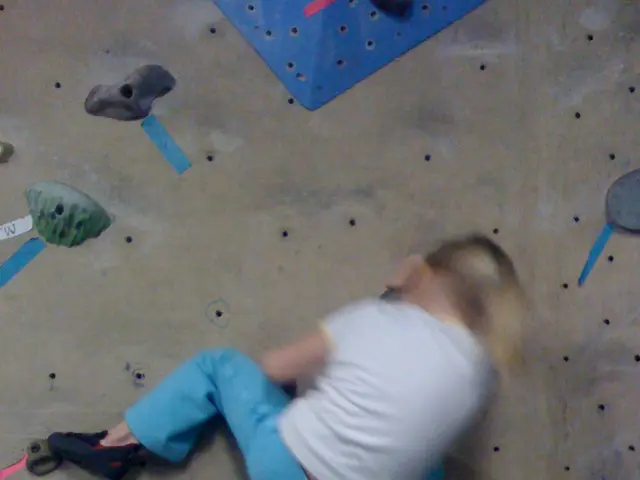Strategies for Managing C3 Glomerulopathy (C3G): Insights into Available therapies
Unveiling the Latest Battles in the Fight Against C3 Glomerulopathy (C3G)
C3 glomerulopathy (C3G) is a devastating, little-known kidney disorder. It's all about the complement system - a part of the immune system - causing havoc, particularly with the C3 protein. But the tides are turning with innovative targeted therapies homening in on specific proteins.
Licensed Complement Inhibitor Leads the Way
- Iptacopan (also known as Fabhalta, by Novartis):
- Regulation: Iptacopan scored FDA approval in March 2025, debuting as the sole C3G treatment greenlighted so far[1][4].
- Operation: Iptacopan is an oral, selective inhibitor of factor B, causing disruption to the alternative complement route[4].
- Intended Use: Primarily designed to lessen proteinuria, a hallmark for progression in C3G[4].
- Justification: Leveraging data from the phase 3 APPEAR-C3G trial (NCT04817618)[4].
Emerging Targeted Therapies in the Pipeline
Several adjunct therapeutics are cloaked in clinical trials, targeting assorted components of the complement system:
| Drug Name | Target Protein(s) | How it Works | Progress ||------------|------------------|----------------|----------------|| Pegcetacoplan | C3 | Inhibits C3 activation | Clinical trials[2] || ARO-C3 | C3 | RNA interference for C3 production reduction | Clinical trials[2] || Danicopan | Factor D | Inhibits factor D activity | Clinical trials[2] || Avacopan | C5a | Inhibits C5a receptor | Clinical trials[2] || KP104 | C3 & C5 | C3 and C5 inhibition | Clinical trials[2] || Narsoplimab | MASP-2 | MASP-2 inhibition | Clinical trials[2] |
A Revolution in Treatment – Could This be the Start?
- Paradigm Shift: The arrival of targeted complement inhibitors symbolizes a transformative moment in C3G treatment, moving past traditional immunosuppression towards targeted action on the complement system itself[5].
- Continuing Research: Multiple phase 2 and 3 clinical trials hover on the horizon, assessing the safety and effectiveness of these novel agents, with preserving kidney function and reducing proteinuria top priorities[5].
- Mainstay Therapies: While we embrace the future, don't forget the trusted angiotensin-converting enzyme (ACE) inhibitors and angiotensin receptor blockers (ARBs), providing crucial kidney protection[2].
Conclusion
Iptacopan, a factor B inhibitor, has taken the lead as the first FDA-approved treatment for C3G. Watch the horizon, as pioneering agents assaulting C3, factor D, C5a, and other complement pathway components scurry through clinical trials[2][5]. The therapeutic landscape of this rare kidney disease is about to undergo dramatic changes, shining a light in the dark corner of C3G Treatment history[2][5].
[1] Novartis. (2025, March). Iptacopan receives FDA approval for adults with C3G. https://www.novartis.com/news/media-releases/newcastle-upon-tyne-uk-2025-03-01-ipitracopan-receives-fda-approval-for-adults-with-c3g
[2] Quigley, M. E., Sinn, J., Zipfel, P. F., & Ewen, M. T. (2023). C3 glomerulopathies. UpToDate. https://www.uptodate.com/contents/c3-glomerulopathies
[3] Okorodudu, A. U. (2021). Pathogenesis of c3 glomerulopathy. Journal of Nephrology, 2021, 1598199. https://doi.org/10.1155/2021/1598199
[4] Novartis. (2023). Iptacopan U.S. Prescribing Information. https://www.accessdata.fda.gov/drugsatfda_docs/label/2023/213966s000lbl.pdf
[5] Mann, M. (2023). Targeting the Complement System for Kidney Disease. American Society of Nephrology. https://www.asn-online.org/education/ionato/features/targeting-the-complement-system-for-kidney-disease/3552/2/
- The advancement in the fight against C3 Glomerulopathy (C3G) is witnessing a revolution with the advent of targeted therapies, such as Iptacopan.
- Uncategorized kidney medical conditions might find their niche in the future, as emerging therapies like Pegcetacopan, ARO-C3, Danicopan, Avacopan, KP104, and Narsoplimab target specific proteins implicated in C3G.
- These new therapies, currently in clinical trials, aim to inhibit C3 activation, reduce C3 production, inhibit factor D activity, inhibit C5a receptor, and provide C3 and C5 inhibition, respectively.
- The medical-conditions spectrum, including chronic kidney diseases like C3G, could witness significant changes as scientists continue to explore the filtering functions of the kidney and the role of the complement system in health and wellness.
- Neurological disorders, traditionally unrelated to C3G, might also draw parallels, as researchers further delve into the intricacies of the interplay between the complement system and various chronic diseases.
- Alongside these novel therapies, traditional immunosuppressive treatments, such as angiotensin-converting enzyme (ACE) inhibitors and angiotensin receptor blockers (ARBs), continue to play a critical role in preserving kidney function for patients with C3G.
- With the deployment of targeted therapies and continued research initiatives, the future promises dramatic shifts in the C3G treatments landscape, illuminating the once-dark corner of C3G Treatment history.








